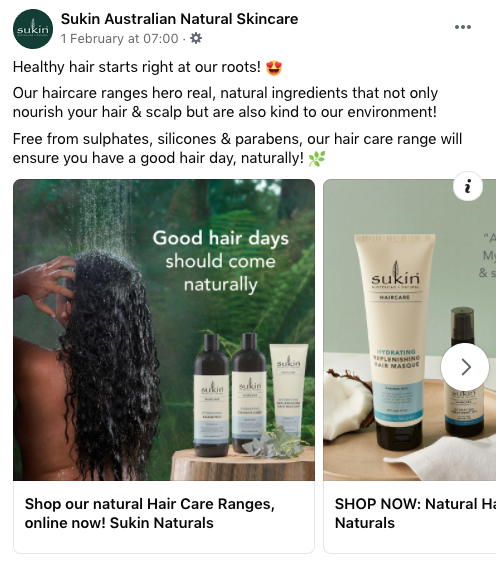So, you’re starting out in business and probably eager to dive straight into coming up with a name and designing a logo. You might have even started setting up your website and socials. It’s all very exciting, but rushing into all of this before defining your purpose, could cost you more time and money down the track.
Some of us more established brands have probably already experienced this. You get a year into business and realise your brand identity doesn’t actually align with your purpose and values. Or, perhaps you never actually identified them in the first place.
A brand goes far beyond its logo. It’s about how your brand is perceived by your customers. About your brand personality, purpose and values. As well as your tone of voice, language and key messaging.
People no longer buy products and services, they buy brands with purpose. As Simon Sinek put it in his 2009 Ted Talk, ‘people don’t buy what you do, they buy why you do it’. Have a look at some of the most successful brands; Apple, Thankyou, Sukin, Amazon, Oxfam. All of these brands have products or services almost identical to their competitors, yet people are buying theirs.
Why? It’s simple. When a customer relates to and aligns with a brand story, things like price, quality, convenience, and even need, come later.
So, where do you start when defining your purpose?
Let’s break it down
You’ve probably heard of the terms Vision, Mission and Values, but what exactly are they? Your Vision should start with your ‘Why’. Why does your business exist? What purpose does it serve? What problems are you solving for the greater good? Are you inspiring change? What is the ideal future that does not yet exist?
Your Mission is ‘How’ your business intends to create that future. It confirms what you do, who you serve and how you serve them. When both of these concepts are clear, the ‘Why’ and ‘How’ work together with clarity of purpose and a plan on how to get there.
Here are a few examples of great Vision and Mission statements:
Oxfam
Vision: A just and sustainable world without the inequalities that keep people in poverty.
Mission: We relieve and eliminate poverty.
Thankyou
Vision: We see a world where not one person lives in extreme poverty.
Mission: Amplifying impactful change-makers serving the world’s poor by redistributing wealth from consumer spending.
Apple
Vision: We believe that we are on the face of the earth to make great products and that’s not changing. We are here to make the best products on earth, and to leave the world better than we found it.
Mission: To bring the best user experience to customers through innovative computer hardware, computer software, and services.
Your Values are the guiding principles and fundamental beliefs when working towards the Mission and Vision.
Shared values improve marketing
Values clarify the identity of your brand and can ultimately attract your ideal customers and employees, giving you a competitive advantage.
As we mentioned above, when a consumer aligns with your values, they are likely to choose you over a competitor. Whether it’s their passion for sustainability, equality, community, authenticity or education, or as simple as valuing quality and creativity; these values are a part of their identity and when it comes to making purchasing decisions, people will usually want to uphold those values. Values-driven marketing will shift from being product-centric to customer-centric.
The same goes for the recruitment and retention of employees. Your values are what makes your culture strong. A brand that defines and lives by its core values will see happier employees, internal growth and shared purpose. Values-driven hiring is important in attracting, acquiring and retaining talent that not only possesses the required skills, but is also a great cultural fit.
Let’s have a look at some great values-driven marketing.
Sukin
Values: Australian Made, Natural Ingredients, Cruelty Free, Vegan, Sustainable, Carbon Neutral
Sukin recently posted the below on their Facebook. Straight away we see the tagline ‘Good hair days should come naturally’, with a beautiful green scenery behind a woman showering. This immediately appeals to consumers that value natural products. The caption then continues the trend of appealing to the audience’s values by mentioning the natural ingredients in their products and how they’re kind to our environment. Yes, they do add the odd product-centric feature like how the range ‘nourishes your hair and scalp’, however it’s quite a subtle addition to a clear focus on nature.

Nike
Values:
- We dare to design the future of sport
- A team that’s empowered, diverse and inclusive
- The world is our community
- A fair sustainable future for every athlete
The following Nike advertisement does not feature a single product in it. It talks to their vision and their values and HOW they plan to ‘design the future of sport’. The advert is aspirational and empowering, while also showing inclusiveness and diversity. It’s the perfect example of a customer-centric marketing.
How to define your purpose
For some, this can be one of the hardest things to define; but once you gain clarity of your brand purpose, it makes everything else that bit easier.
To define your purpose, it’s best to start with your ‘Why’, ‘What’ and ‘How’.
You would have seen us mention these terms earlier. We also mentioned Simon Sinek and his Ted Talk on starting with why. Simon’s ‘Golden Circle’ approach is the perfect way to inspire customer loyalty. ‘Why’ being the core or centre of the circle, then the ‘How’ and finally the ‘What’ at the crust. The ‘What’ level corresponds with the neocortex part of our brain. The part responsible for rational and analytical thought and language. The limbic brain is responsible for our feelings, behaviour and decision making. So, by communicating from the inside out, we are appealing to the values of the customer and driving behaviour first. The ‘What’ then allows us to rationalise those decisions later.
When defining your brand purpose, you should always start with your ‘Why’, but for the sake of explaining what each term means, we will work from the inside in.
What
Every business should know their ‘What’. ‘What’s’ are easy to identify. Simply describe your products and services.
How
This is ‘How’ you do ‘What’ you do. It can be defined as your Mission statement. Explain ‘How’ you do things different to, or better than your competitors – Your unique selling proposition (USP).
Why
It starts with ‘Why’. Your ‘Why’ is ultimately your Vision. What is your purpose, cause or belief. It focuses on the tomorrow; the future that does not yet exist.
Here are some other questions to think about when defining your purpose:
- What is your brand story? Personalise and humanise your story. Explain why and how you got to where you are today.
- What problems do you solve for your customers?
- Why you over your competitors? Try using the SWOT analysis to define your strengths, weaknesses, opportunities and threats related to your competition.
- What is your brand’s voice and personality? Think about how you want your customers to perceive your brand or how your employees would describe its characteristics.
How to define your brand values
Values can also be hard to narrow down to just a few select terms.
The most common way to define values is through using nouns. For example, accountability, communication, equality, honesty, integrity, innovation, trust, etc.
However, more brands are choosing to define their values with verbs; action or doing words. For example, adapt, change, explore, grow, inform, include, overcome, perform, succeed, teach, etc.
So, how do you actually choose values that are right for your brand?
Research
It’s best to start with research. Write down a list of your own personal values. Observe your team – what values do they possess? Look at your ideal customer – what do they value in products and services?
Qualitative research, such as surveys and focus groups with your ideal customers and team, can provide important insights into what they value the most. This not only helps you define your own values but can also help you develop values-driven marketing campaigns.
Focus on your ‘How’
It can also be helpful to focus on your ‘How’. Think about your USP and how it sets you apart from your competitors. For example, you might focus on sustainability with eco-friendly products. ‘Sustainability’ could then be perfect as one of your values.
Don’t be afraid to be different
Don’t be afraid to be different. Words like ‘authenticity’ and ‘innovation’ are quite common in values, so it can be hard to stand out. Think about alternative words to describe the same things, or even come up with your own words or phrases.
Build-A-Bear came up with some great puns for their values with ‘Di-bear-sity’, ‘Colla-bear-ate’ and ‘Cele-bear-ate’. Then there’s Facebook who opted for unique phrases like ‘Focus On Impact’ and ‘Move Fast’.
Remember less is more
You might have a long list of words that fall into the same category. For example, honesty, responsibility and trust could be narrowed down to the word ‘integrity’.
Your brand purpose and values are your north star. The constant bright source on your journey, helping you determine your direction and lead toward a purposeful destination.
Whether you are a large organisation or a small local start up, when you have clearly defined your direction, those that believe in where you are going, will follow.
If you need guidance in defining your purpose and values, please get in touch with us today.
Alternatively, you can join our crew and we’ll send you our free Brand Building Checklist, along with our Customer Avatar Template, to help you build and nurture your brand.


7 thoughts on “Vision, Mission, Values and Why: The Importance of Brand Purpose”